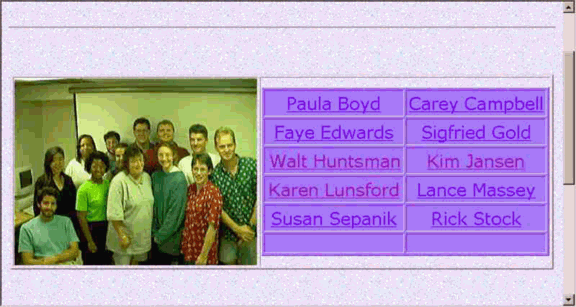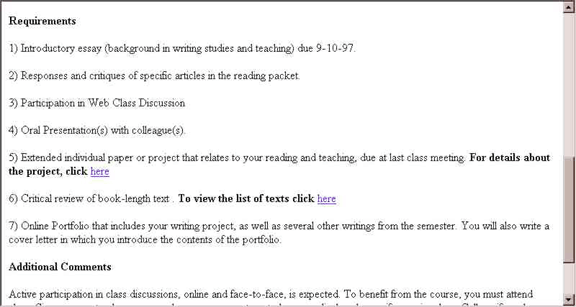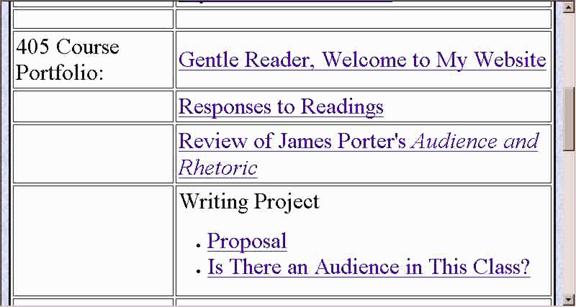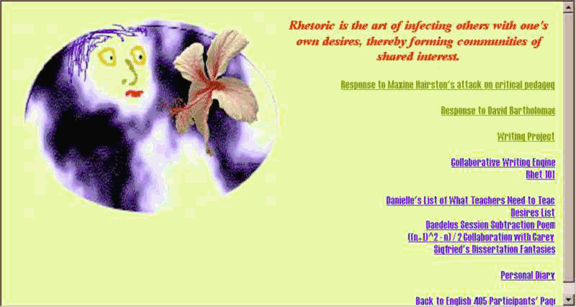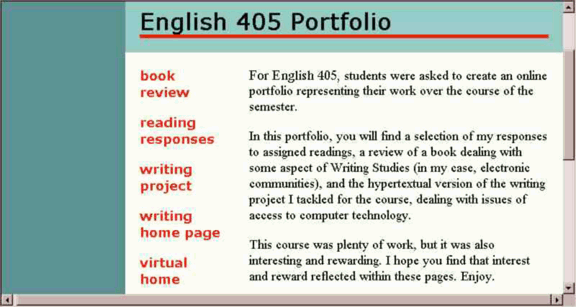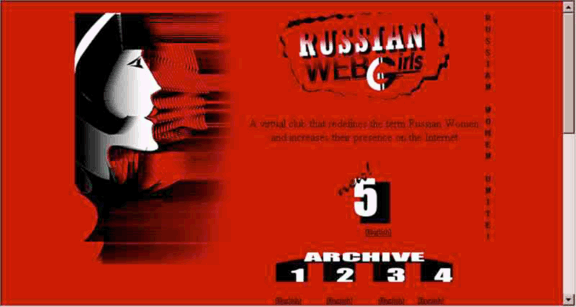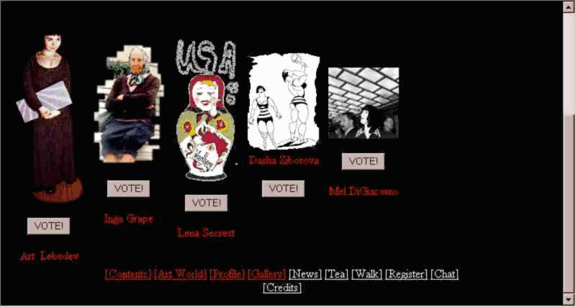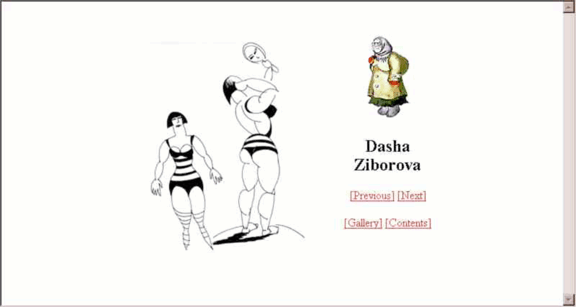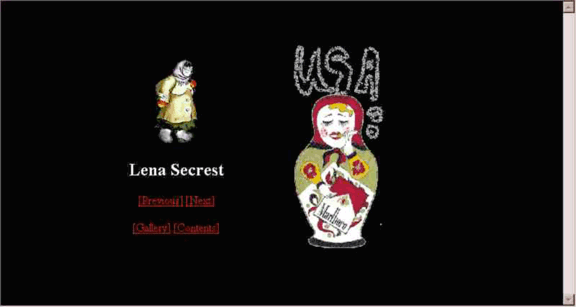Accessing the Virtual Worlds of Cyberspace
Skip other details (including permanent urls, DOI, citation information): This work is protected by copyright and may be linked to without seeking permission. Permission must be received for subsequent distribution in print or electronically. Please contact [email protected] for more information.
For more information, read Michigan Publishing's access and usage policy.
This article is the text of Gail Hawisher's keynote address to the Furman University National Symposium on New Information Technologies and Liberal Education and was given on May 6, 2000. It is published here with permission.
The study of technology needs to be grounded in the material as well as the pedagogical, cultural, and the cognitive if it is to be intellectually and ethically respectable." —Charles Moran (p. 206)
"Cyberspace," "Information Superhighway," "Electronic Frontier," and "World Wide Web" are all terms used in connection with the Internet, an electronic space that John Markoff once described in a New York Times article as a "computer generated neighborhood dotted with avenues, residences, and commercial centers" (Markoff 1993). Today the Internet continues to expand its vast conglomeration of computer networks, and according to the latest Internet Index, it currently reaches almost 150 million users (The Internet Index 2000). A large neighborhood by any standards, to be sure.
For many of us throughout the world, the Internet is indeed a neighborhood, peopled by friends and colleagues and Web sites from which we might borrow not a cup of sugar nor a lawnmower, but instead a bit of information — a reference, a teaching strategy, a reading list, a bit of encouragement in mid-draft. Yet, for many others, the Internet and the World Wide Web, the hypertextual component of the Internet, comprise a "gated community" where only a privileged few can afford to enter and take advantage of the abundant resources of this exclusive online neighborhood that's fast becoming a metropolis in its own right. Despite its huge growth, many are still being left out, and some of those who are not left out cannot access the same privileges as those who dwell in the upscale regions of the neighborhood.
The Global Dimensions of Access In and Out of School
In talking about access I'm not telling you anything new: It is no secret that for people in many parts of the world there are no computers, much less easy access to the Web. Mark Warshauer has pointed out that the Internet is primarily dominated by users in the United States and other industrialized countries. He includes statistics indicating that more than 80% of the world's Internet host computers in July 1997 were in the United States or Western Europe, and of the sites remaining, more than half were in Canada, Japan, Australia, or New Zealand. Six-tenths of a percent are in Africa, mostly South Africa, and four-tenths of a percent are in the Middle East, excluding North Africa (Warshauer 18). Is it any wonder, then, that when I did a survey of my international colleagues on the Internet a few years ago, I found that most hailed from places like New Zealand, Australia, France, Germany, the United Kingdom, Scotland, Netherlands, Belgium, Denmark, Sweden, Finland, and Switzerland — the same old Internet players.
Such inequities in access are not restricted to people in developing nations around the world. In the United States, access is a similarly vexing problem. Falling Through the Net: Digital Divide, a government report that came out last summer and whose name is now a household word, documents that while minority groups are increasingly gaining access to computers and the Internet, the racial divide remains striking, with blacks and Hispanics less than half as likely as whites to explore the net from home, work, or school (Bolt and Crawford 2000; Sanger 1999). Similar findings emerge from a survey conducted each year by the Georgia Institute of Technology. In its tenth and most recent user survey, it found that — as in all previous surveys — the respondents continue to be predominantly white (87.2% in the tenth survey, 87.4% in the ninth). Although younger respondents are more racially diverse than in the past (according to self classifications), African-Americans account only for 1.7% of respondents who have been online for more than a year.
Access and Literacy
And even as these statistics improve in the coming years, it should be noted that access in and of itself is not sufficient; as my colleague Bertram Bruce has argued, access is not an "unalloyed good" (Bruce 1999). Sometimes it is not so much that certain groups have less access as it is that they have different access, and these different kinds of access do not show up in the statistics just presented. As Bruce has pointed out, access can also mean "social disconnections, deskilling of work . . ., cyber-crime, corporate surveillance, [and] loss of personal privacy" to name a few of the conditions that frequently accompany the introduction of computers. In American schooling what this "different" access often means is that those classified as the brighter students have access not only to computers and the Internet but also to advanced applications like Web authoring; these students are able to participate in writing and creating the World Wide Web. But those students classified and typed as "other" for whatever reason — publicly it might be stated that they are on a "lower track" or that they lack "basic skills" — find themselves restricted in their access. They are usually assigned to computer labs where instructional software delivers lessons to them in a manner not so different from the old drill-and-skill paper workbooks. These students are not taught more advanced computing; they do not become Web authors and "write" the Web; they are instead confined to browsing the Web — merely looking at it — accessing those materials that others have already written and prepared for them. Jane M. Healy, an American educational psychologist, in her book Failure to Connect, (1998) documents what we might call "second-class" computer access and argues that computers too often are used inadequately in schools. In her important study, she found schools relying on software packages with flashy graphics and simplistic recall questions rather than presenting students with challenging tasks that require creative and hard thinking about the material at hand. There is also the tendency for administrators and teachers to use the machines as "baby-sitters" to keep students company, instead of as opportunities for the students to engage in rewarding problem-solving activities.
"In the next century the Web will be every bit as critical a medium for literacy activities as books, paper, pens and pencils have been in the 20th century"
Access outside the school setting can also mean, of course, simply the ability to download from the Web the panoply of glitzy advertisements that many commercial sites feature to promote and sell their wares via the Internet. The irony, of course, is that as the World Wide Web becomes increasingly successful for commercial advertising, many will be able to see and surf — to view — more of the Internet but will be able to participate on it less. (This past year alone Internet advertising revenues more than doubled, coming to a year-end total of $4.62-billion, according to the Internet Advertising Bureau 2000). New machines such as the "i-opener," which are promoted as "household appliances" and billed as "ideal for anyone who wants Internet and e-mail access without a computer," offer "one-click access to the shopping mall." The ads for these machines implicitly construct images of women, and perhaps the elderly, as non-computer users rushing out and about to buy this "household appliance" so that they can more easily purchase society's wares. But they nonetheless will remain essentially without computing abilities. The multi- and trans-national corporations will make sure that they target this market and other large segments of the world's population for profit. Vast numbers will be able to browse the electronic world and make purchases, but will they be able to participate easily in the kinds of personally and educationally profitable activities of which we — the connected and educated of the world — now partake? These are the sorts of questions that trouble me.
Problems with the practices of second-class access described here arise when we begin to introduce notions of literacy, for surely it is no surprise that in the next century the Web will be every bit as critical a medium for literacy activities as books, paper, pens, and pencils have been in the twentieth century. The World Wide Web is fast becoming a global literacy system, a technology-embedded environment in which writers distribute words and images, which are, in turn, read and responded to by those working in schools, businesses, government settings, and the public sphere. And whether we are "viewers" or "doers" in this new literacy environment on the Web makes a huge difference. After twelve years travelling the world to observe the local impact of information technology, Manuel Castells, a Spanish sociologist, wrote a landmark three-volume work on the Information Society. In it he argues:
The multimedia world will be populated by two essentially distinct populations: the interacting and the interacted, meaning those who are able to select their multidirectional circuits of communication, and those who are provided with a restricted number of prepackaged choices. And who is what will be largely determined by class, race, gender, and country (Castells 1996, 371).
Thus when we speak of access, what Charles Moran has called the "A-Word," increasingly we need to stipulate what privileges "access" must include. And to my mind "access" must include not only being able to browse the Web, or even being able to write to the Web — to be a Web author — but also must mean that we and our students have an awareness that information technology not only mirrors inequitable opportunities that already exist, but also creates and sustains them.
Pedagogical Implications
How do we go about ensuring for our students this complicated but nevertheless necessary kind of access? The first thing we need to do is to recognize that online literacies, like those of print, are far more than simple sets of skills to be transmitted or delivered to students in person or online. Literacies — technological or otherwise — are culturally embedded within our value-laden everyday activities. As Anne Wysocki and Johndan Johnson-Eilola have argued of print literacy, often "when we speak . . . of 'literacy' as though it were a basic, neutral, contextless set of skills, the word keeps us hoping . . . that there could be an easy cure for economic and social and political pain, that only a lack of literacy keeps people poor or oppressed" (Wysocki and Johnson-Eilola 1999, 355). Increasingly, this same kind of thinking is applied to online literacy practices: If only we could teach everyone to be "technologically literate" and give all easy access to computers, the world would rise above its poverty and ignorance. But as we have seen, such access — such technological literacy — is insufficient in and of itself. The "interacted," to use Castells' term, are merely the pawns of society to be played with and targeted as appropriate consumers for particular markets. We need, then, to prepare those whom we teach to be the "interacting," those who are able to benefit and profit from their online experiences.
"Perhaps the place to start is in thinking about how we might transform our own teaching habits and pedagogies"
Perhaps the place to start is in thinking about how we might transform our own teaching habits and pedagogies. Jay Lemke argues that schools and universities should consider transforming their pedagogy to what he calls, not surprisingly, "the interactive learning paradigm" (Lemke 1998, 294). The interactive learning paradigm assumes that people decide what they need to know through their participation in various activities in which their needs become apparent and, then, through consulting with those who have the knowledge that will address these needs — sometimes teachers, sometimes other students. It is a pedagogy that invites collaboration, asking students to participate with others in coming to know and to attain their own particular and individually tailored goals.
One way in which I've tried to transform my own pedagogy involves requesting students to construct throughout the semester what I call "online portfolios." Oftentimes, with the entrance of the Web, we see instructors moving online by putting their syllabus and all their lecture notes on the Web for students to access. This is a beginning, of course, but note that once again it is the students who are "interacted": They are the ones who are primarily browsing and reading the material that the instructor provides for them. I would argue that in this model it is the instructor who does the learning; he or she is actively engaged in not only learning the selected material but also in tackling the requirements of Web authoring. The students, on the other hand, are likely to be less engaged. We might call this approach the online "banking model" of education if we apply Paulo Freire's thinking to computing environments. In this model the instructor claims the role of primary dispenser of knowledge in a similar fashion to the face-to-face lecture mode with which most of us are very familiar. Instead, I try to shift responsibility to the students by requiring that they construct online portfolios for which they select and arrange their class writings at a Web site they've created specifically for my class.
The online portfolios share the same advantages that characterize more conventional portfolios — students are able to look back on their semester's work and reflect on their writings and responses — but they have the additional advantage of requiring the students to become Web literate. At the very beginning of the semester, I tell students they will be working on their online portfolios throughout the course as one aspect of their final project. Here's a brief overview and sampling of what I mean by an online portfolio.
Pictured above is a recent class I taught. Like many of you, I provided the students with an online syllabus or syllaWeb, with links to their various assignments.
The portfolio handout outlines their task. They must include five links to various assignments in addition to a cover letter or reflective piece on which I place a great deal of emphasis. The reflective piece lets me in on how their thinking has evolved over the past four months or so.
My goal is that they emerge at the end of the semester not only with a collection of work of which they can be proud but also with a certain comfort and competence in Web authoring.
Through their creation of online portfolios, then, they not only learn Web authoring, but they also begin to understand how others arrange their Web sites to make them rhetorically effective. They also learn how the visual and textual together make meaning, and they begin to develop strategies for bringing the two together. Through "doing," rather than merely "viewing," students incrementally take charge of their own interactive learning.
Having said that, however, I want also to stress that it is not enough merely to teach students the "doing" of the Web, but it is a beginning that prepares them and gives them confidence for critically and productively engaging with other Web sites. They must also be taught how to view and read the Web critically. As Cy Knoblauch has written of print-literacy environments, we need to teach in such a way as to help students in their "reading and writing abilities with a critical consciousness of the social conditions in which people find themselves, recognizing the extent to which language practices objectify and rationalize these conditions and the extent to which people with authority to name the world dominate others whose voices they have been able to suppress" (Knoblauch 1990, 79). Among the many problems that persist in online (and off-line) literacy classrooms in the United States are the continued marginalization of individuals because of race, gender, age, sexual orientation, or handicap. And even when teachers are able to help students become more sensitive to the problems of those who are marginalized, translating this new awareness into venues for productive action remains one of the more pressing pedagogical challenges of the new millennium. These challenges will change as the Web itself evolves and as the cultural settings and contexts for learning themselves change, but the problems — how to teach our students to interact critically in Web environments — will persist.
Global Considerations
Cynthia Selfe and I began to see changing representations on the Web globally in our recent study of Web practices from around the world. We learned through this study that literacies are always already local; that is, they are marked by particular cultural, linguistic, historical, and geographic roots. But more than that, we also learned that these new online literacy practices are an important means of creating and expressing identities in changing postmodern landscapes. In our book, Global Literacies and the World Wide Web (2000), chapter authors from Greece, Australia, Hungary, Palau, Norway, Japan, Scotland, Mexico, Cuba, South Africa, and the United States represent and examine online literacy practices in their particular country and also comment critically on how these are determined by national, cultural, and educational contexts. The chapters highlight the simultaneous move toward the global network society and the need to stay rooted in particular cultures. We read, for example, of the Greeks' penchant in Web-literacy environments to value English over other languages, but note also their accompanying uneasiness that English might rob from them their cultural heritage of polylingualism; of the fourteen-year-old Mexican student's eschewing Spanish search engines in favor of the English, yet the necessity of using the Spanish word "conocer" (i.e., to have an understanding of) to describe Mexican students' and teachers' relationships with the Web; of the Norwegians' strong sense of nationalism, but nevertheless their recognition that when it comes to popular culture English is always "in the air"; of the fact that 174 Web sites in Australia focus mainly on indigenous topics yet only 61% of them demonstrate any sort of indigenous involvement; and, in Palau, of the obligatory Western imperative to use two names instead of the customary Palauan single name, so that children now sport their father's first name as a surname, which often causes mistaken identities. All these examples speak to the strong influence of Western culture and the English language on the Web. In the survey out of Georgia Tech University, 92% say that English is their primary language — not their family language necessarily, but the one they speak most of the time.
But we also found evidence in our study that when people have equitable and sophisticated access to the new technologies, they increasingly bend and shape the Web for their own purposes. In a study I did of the online literacy practices and Web sites of women in different parts of the world, I saw women constructing identities that cross national and ethnic boundaries and enlist gender as a basis for hybrid identities. In three international feminist sites I looked at — Russian Web Girls; Russian Feminism Resources; and WyberNetz [formerly http://www.web-publishing.com/WyberNetz/hello.htm], a German site — identities were no longer fully defined by history or geography. The identities these Web-spinners carve out for themselves are multiple — at once Russian or European, but participating, too, in the marketplace economy of the Web dominated by Americans. I would argue that these Web sites, in Ilana Snyder and Cathryn McConaghy's words, "transform, rather than simply reproduce, particular social and cultural formations" (McConaghy and Snyder 1999).
"Access that is only partial — that restricts users merely to viewing the Web — is insufficient"
Let me show you briefly an example here of the Russian Web Girls site, whose express purpose in its Web authors' words is to "break down the stereotype of Russian women."
Note the bold use of color — solid Communist red, with a sidebar blaring "Russian Women Unite," which at once asserts a Bolshevik and proletarian identity before immediately undercutting it with a text that reads,
When Chanel redesigns the classic suit, the course of fashion changes for the next decade. And when five women get together to break down the stereotype of Russian women, the world will never look at them again the same way. Russian WebGirls was born to make way for a new view of the Russian Woman — professional, beautiful, smart, sexy, multi-talented. (http://www.russianWebgirls.com/; 4 July 1998)
Identifying and illustrating common stereotypes of Russian women, the Russian WebGirls then play with the images, asking viewers to choose from Babushka Gallery "which image better reflects a Russian woman" — Art Lebedev, Inge Grape, Lena Secrest, Dasha Ziborova, or Mel DiaGiacomo.
Each image, when clicked upon, is also accompanied by a little babushka-ed figure, who walks energetically alongside the chosen stereotypical representation and, in Figure 8., the Russian nested doll is depicted holding a pack of Marlboro cigarettes while puffing "USA." All these renderings are slightly ironic representations of Russian women's identities, identities which the women who maintain the WebGirls' site themselves constructed.
Russian WEBGirls is a wonderfully intriguing site, but the site is somewhat peculiar not so much because of the one Italian or Italian-Russian WebGirl or because of the wonderfully kooky Babushka story that also greets viewers. What surprised me most is that the Russian Web Girls site was not created in Russia. Instead it owes its origins to six mostly Russian women, all of whom now live in New York.
Most were born in St. Petersburg; are fairly recent arrivals in the United States; and all, to my eyes, are amazingly talented. Among them is one who owned an Internet Service Provider in Russia and continues it in New York; three are artists; one an engineer; another a jeweler, portrait artist, industrial designer and cartoonist. The one who came to the United States at a young age is the English translator, a journalist at the Riverdale Press in the Bronx who has aspirations to go to Russia as a foreign correspondent. There is also a Russian translator by the name of Inna Kolobova, who, incidentally, now lives in Dallas, Texas. Through their active Web constructions, these women — Donna Haraway would call them cyborgs — commit themselves to "partiality, irony, intimacy, and perversity" (Haraway 1991, 151). But the zany and playful identities we encounter here are only part of the narrative.
Technologically and educationally privileged, with full access to the workings of the Web, the Russian Web Girls and other women involved in this study of feminist Web sites write themselves online in sophisticated ways. As practiced and narrated in these Web pages, women take on multiple identities that embrace cultural specificity and globalized culture all at once in complex and, sometimes, contradictory ways. At these sites, we can begin to see how expanded identities expressed and enacted in, and through, online literacy practices can work to contribute to transformations of the very cultures in which individuals participate.
So, to sum up, what I've been arguing here is that we have to work diligently for the benefits of full access to the new technologies for our students and ourselves. Access that is only partial — that restricts users merely to viewing the Web — is insufficient. There must be "doing" in addition to "viewing." And even the "viewing" must be accompanied by a critical eye; it must entail the same sort of careful and thoughtful practices that we ask students to bring to their reading of print materials and books. We must make certain too, as Bonnie Nardi and Vicki O'Day point out (1999), to summon forth a vision of technology that opens up possibilities for action, enabling those with whom we work to reap the benefits of technology without being diminished by it (ix). When free and open access does prevail, we begin to have a hint of what the Web might become, an electronic neighborhood inhabited by active individuals who read and write the "Webs of power" (Haraway 1991) and forge new worlds through online literacy practices. Let us continue in our efforts to make the neighborhood a welcome and accessible electronic meeting place for all. We cannot, when all is said and done, afford to live in the "gated communities" of Cyberspace.
Gail Hawisher is Professor of English and Director of the Center for Writing Studies at the University of Illinois, Urbana-Champaign, where she teaches graduate and undergraduate courses in writing studies. She has published widely in literacy and technology studies, and her work has appeared in College English, Written Communication, and College Composition and Communication, to mention a few. Recently completed projects are the co-authored "Women on the Networks: Searching for E-Spaces of Their Own" and Computers and the Teaching of Writing in American Higher Education, 1979-1994: A History. She and Cynthia Selfe continue to edit Computers and Composition (Elsevier) and also have two new books out: Passions, Pedagogies, and 21st Century Technologies (Utah State University Press, 1999) and Global Literacies and the World Wide Web (Routledge, 2000). She serves on the Executive Committee of the Conference on College Composition and Communication and is also a member of the Modern Language Association's Ad Hoc Committee on the teaching of writing. She may be reached at [email protected].
Works Cited
Bolt, David and Ray Crawford. 2000. Digital Divide: Computers and Our Children's Future. New York: TV Books.
Bruce, Bertram C. 1999. "Speaking the Unspeakable About 21st Century Technologies." Passions, Pedagogies, and 21st Century Technologies. Ed. Gail E. Hawisher and Cynthia L. Selfe. Logan, UT and Urbana, IL: Utah State University Press and NCTE.
Castells, Manuel. 1996. The Rise of the Network Society. Malden, MA: Blackwell.
Graphic, Visualization, & Usability Center's (GVU) 10th WWW User Survey http://www-static.cc.gatech.edu/user_surveys/survey-1998-10/.
Haraway, Donna. 1991. Simians, Cyborgs, and Women: The Reinvention of Nature. New York: Routledge. 149-181.
Hawisher, Gail E. and Cynthia L. Selfe. 2000. Global Literacy and the World Wide Web. London and New York: Routledge.
Healy, Jane M. 1998. Failure to Connect: How Computers Affect Our Children's Minds — for Better and Worse. New York: Simon & Schuster.
Internet Advertising Bureau. Report by PriceWaterhouseCoopers. Nua Surveys. http://www.nua.ie/surveys/?f=VS& art_id=905355966& rel=true.
Internet Index. [formerly http://new-Website.openmarket.com/intindex/00-02-s.htm].
I-opener. Netpliance. [formerly http://www.netpliance.com/"].
Knoblauch, C. H. 1990. "Literacy and the Politics of Education." In The Right to Literacy. Ed. Lunsford, Andrea A., Helene Moglin, and James Slevin. New York: MLA.
Lemke, Jay L. 1998. "Multimedia Literacy: Transforming Meanings and Media." In Handbook of Literacy and Technology: Transformations in a Post-Typographic World. Ed. David Reinking, Michael C. McKenna, Linda D. Labbo, and Ronald D. Kiefer. Mahwah, NJ: Erlbaum.
Markoff, John. 1993. New York Times. October 24. p. E7.
McConaghy, Cathryn and Ilana Snyder. 1999. "Working the Web in Postcolonial Australia." In Global Literacies and the World Wide Web. London and New York: Routledge.
Moran, Charles. 1999. "Access: The A-Word in Technology Studies." In Passions, Pedagogies, and 21st Century Technologies. Ed. Gail E. Hawisher and Cynthia L. Selfe. Logan, UT and Urbana, IL: Utah State University Press and NCTE.
Nardi, Bonnie and Vickie O'Day. 1999. Information Ecologies: Using Technology with Heart. Cambridge: MIT Press.
Russian Feminist Resources. http://www.geocities.com/Athens/2533/russfem.html.
Russian WebGirls. http://www.russianWebgirls.com/
Sanger, David E. 1999. "Report Shows Increase in Digital Divide." New York Times, 9 July. The report, issued by the National Telecommunications and Information Administration, is available through its Web site [formerly http://www.ntia.doc.gov/ntiahome/digitaldivide/].
Treese, Win. Internet Index. (http://www.openmarket.com/intindex/99-05.htm).
Warshauer, Mark. 1999. Electronic Literacies: Language, Culture, and Power in Online Education. Mahwah, NJ: Erlbaum.
WyberNetz. [formerly http://www.Web-publishing.com/WyberNetz/hallo.htm}.
Wysocki, Anne and Johndan Johnson-Eilola. 1999. "Blinded by the Letter: Why Are We Using Literacy as a Metaphor for Everything Else." In Passions, Pedagogies, and 21st Century Technologies. Ed. Gail E. Hawisher and Cynthia L. Selfe. Logan, UT and Urbana, IL: Utah State University Press and NCTE.
Links from this Article
Russian Feminism Resources http://www.geocities.com/Athens/2533/russfem.html
Russian Web Girls http://www.russianWebgirls.com
WyberNetz [formerly http://www.web-publishing.com/WyberNetz/hello.htm]
